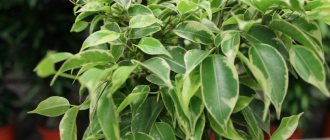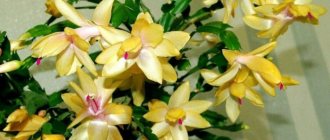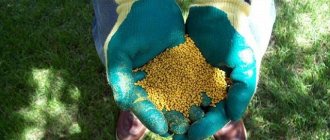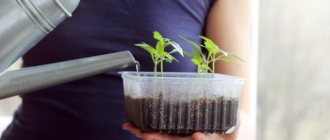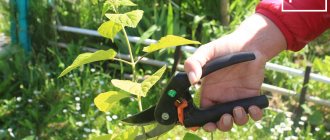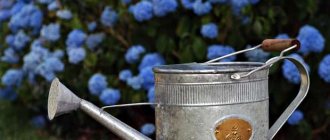Category: For flowers and indoor plants Reading time: 8 min · Views: 7,819
Ficus is a tropical plant that was loved by Russian gardeners a hundred years ago. This beautiful ornamental bush needs warmth, moisture and special fertilizers. What should the ficus be fed so that it does not turn yellow and drop its leaves? It turns out that the secret lies in the correct proportion of minerals and vitamins. In this article we will consider the technology of growing ficus in an apartment.
Why feed ficus
The plant needs adequate nutrition. These flowers are not often replanted, so the content of nutrients in the soil is depleted. Quickly using up the reserves available in the soil, the tree begins to experience a lack of minerals and trace elements.
With good care and feeding, a new leaf appears every week. If the conditions in the apartment coincide with the conditions of the tropical forest, the plant may even bloom.
Which component is missing for full development can be determined by the appearance of the flower:
- stopping growth indicates a lack of nitrogen in the soil;
- deformation and excessive stretching of branches is a sign of phosphorus deficiency;
- iron deficiency contributes to the appearance of pigmentation on leaves;
- faded leaf color - lack of potassium and calcium.
Important! Adding fertilizers to the soil will help restore the appearance and prevent the death of the flower.
Tips and tricks from flower growers
Many beginning flower growers cannot do without the advice of experienced comrades.
There are a number of recommendations that should be taken into account by every lover of exotic culture:
- Fertilizers should be applied no more than once every 2 weeks.
- In winter, ficus needs feeding only if it lives in conditions as close as possible to summer (warm air, additional lighting, a certain level of humidity).
- After transplantation, you can start feeding the ficus 2 months later, since the new soil already contains all the useful substances.
- It is better to dilute all industrially produced fertilizers less than the concentration indicated on the package. This will help avoid an overdose of microelements, but will allow you to saturate the soil with a sufficient amount of nutrients.
If you keep the ficus in comfortable conditions, it will delight its owners with its stunning decorative appearance all year round.
How to fertilize ficus - popular preparations
Specialized stores sell a large number of flower fertilizers. They can be both complex and intended only for ficuses. Effective drugs:
- Agricola . This is a universal remedy that is suitable for all types of ficus. It makes the color more saturated and has a positive effect on leaf growth. For 10 sticks you will need to pay 63 rubles.
- Flower heaven . This liquid fertilizer accelerates growth. It has no smell. Cost – 38 rubles. for 200 ml.
- Rainbow . The drug is produced on the basis of vermicompost. The main disadvantage is the rather pungent smell. Price – 69 rub. for 500 ml of solution.
- Bona Forme . This feeding is intended for ficus and palm trees. It is suitable for both root and foliar feeding. Active components improve the appearance of the plant. For 285 ml you will need to pay 100 rubles.
Any diluted composition should be used immediately. They cannot be stored.
Basic information about ficus
The plant belongs to tropical crops. They love to decorate apartments, houses and offices. It stands out from other exotic plants due to its unpretentiousness. But sometimes the ficus sheds its leaves. What to do? Many readers want to know the reasons for this phenomenon. We have collected the most useful tips for you.
Various types of ficus trees take root at home. Their appearance is different from each other. Most often, housewives acquire rubber-bearing, lyre-shaped, dwarf species or ficus Benjamin. All these indoor crops have a developed root system, leaves with a dense structure, and a bright green color. Some varieties are distinguished by spots and leaf edging.
Sometimes the plant is decorated in the form of an indoor tree, a cascading hanging form, or a miniature bonsai. In nature, they reach enormous sizes and look like trees. Domesticated ficus trees are smaller in size and grow slowly. Below you will learn about fertilizing for ficus growth, the best mineral and organic fertilizers.
Mineral fertilizers
Industrially produced preparations are used as mineral supplements. They can be produced in this form:
- powders;
- pills;
- liquid solutions;
- granules;
- long-acting sticks.
Reference! It is more convenient to use liquid fertilizers.
For proper nutrition, the flower will need 13 micro- and macroelements. It is difficult to provide him with all the necessary substances. This complex feeding is used only in specialized greenhouses. You cannot buy such drugs in every store.
Usually, at home, we limit ourselves to adding the basic elements necessary for the life of a flower. Fertilizer composition:
- nitrogen is the “building material” for the growth and development of foliage and shoots;
- phosphorus - improves decorative qualities, provides rich leaf color;
- potassium - strengthens the immune system, protects against the negative effects of the environment and various infections;
- calcium - facilitates the delivery of nutrients to plant cells.
What is fertilizing and why is it needed?
Feeding the plant is considered one of the main aspects of care. For growth and development, the plant needs nutritional components, which it mainly takes from the soil. However, even high-quality soil rich in minerals and vitamins is depleted after 3–4 months.
- A lack of nutrients leads to undesirable changes:
- stopping flower growth;
- loss of leaf color intensity;
- stretching the stem in height;
- foliage pigmentation;
- yellowing and falling of leaves;
- damage to the stem and foliage by parasites.
Each of the symptoms is a serious problem that can be prevented by organizing high-quality feeding. At different stages of development, the flower needs different types of feeding and different dosages. There are two types of fertilizers: mineral-based and organic.
Organic fertilizers for Benjamin and other varieties
For successful maintenance of ficus, organic fertilizers are no less important. They improve the structure of the soil and enrich it with useful elements. Thanks to such additives, the air permeability of the soil increases, which has a positive effect on flower growth.
The category of organic fertilizers includes:
- peat;
- compost;
- humus;
- bird droppings.
Important! Some organic fertilizers have a specific unpleasant odor.
When applying a solution of high concentration, they can destroy the flower. Organic mixtures from specialty stores can be a worthy alternative.
Nettle infusion
The folk remedy allows you to saturate the soil with nitrogen, iron and carbon. This is one of the best ways to feed indoor flowers. It is often also used to mulch the soil.
To prepare the solution, you need to do the following:
- Collect nettle shoots that have not yet formed seeds.
- Grind, pour into a container (the shoots should fill it halfway).
- Cover with a lid and place in a dark place.
- Leave for 2-3 weeks.
- Dilute the resulting composition with water 1 to 10 and water the flower.
- A solution with a concentration of 1 to 20 can be used for spraying.
Reference! The readiness of the infusion is indicated by the dark green color and the presence of bubbles on the surface.
Vegetable humus
This type of fertilizer is easy to make yourself. To do this you will need a variety of plants and foliage. Rotten plants are a supplier of nitrogen and many other microelements that are useful for indoor flowers. The resulting humus is diluted in water in a ratio of 1:10 and watered over the tree.
Humus (chicken droppings and mullein)
The classic version of organics is chicken manure or koryak. These are sources of nitrogen, which is needed for leaf growth.
Chicken manure is concentrated organic matter. It is not used in its pure form.
This product is applied in the spring and summer when active growth is observed. It is recommended to take 5 g of rotted droppings per 1 liter of water. The result is a cloudy liquid with a pale green hue. It should be applied only after abundant watering.
Cattle manure is composted before use. Fresh fertilizer can burn the root system. For 1 g of organic matter, take 1 liter of water.
Wood ash
The ash can be used as a dry fertilizer, sprinkled under the roots of the ficus, or prepared as a liquid solution. To do this, pour 1 tablespoon of wood ash with a liter of boiling water. The slurry is infused for seven days. Water the plant with the resulting mixture and spray the foliage.
Important! While the solution is infused, it must be shaken daily.
With the help of ash, the plant receives several useful substances at once:
- nitrogen;
- phosphorus;
- potassium.
succinic acid
Succinic acid can be purchased at a pharmacy. One tablet is diluted in 1 tbsp. l. water. Such a remedy:
- activates the growth process;
- increases the turnover of the immune system and resistance to diseases.
For preventive purposes, a solution of succinic acid is used to spray ficus.
Spilled tea and coffee
The grounds remaining after drinking black tea or coffee will serve as an excellent fertilizer for ficus, enriching the soil with oxygen. The remains of coffee or tea leaves are poured into the pot and lightly covered with earth. It is impossible to leave fertilizer on the surface, as it contributes to the appearance of midges and mold.
Important! It is unacceptable to use fresh coffee or tea as fertilizer. A high concentration of nitrogen will destroy the roots and cause the death of the plant.
Fruits and sugar
Sugar will give the plant a boost of energy. It can be used by adding it to the soil, or as a liquid solution. For this, 1 tbsp. A spoonful of sugar is diluted in a liter of water and watered over the ficus.
Fruits provide the soil with many beneficial substances that have a beneficial effect on plant nutrition. The following is used as fertilizing:
- citrus peels;
- banana peel;
- a decoction in which fruits were boiled.
The most effective and popular is an infusion made from banana peels. To prepare it you need:
- Grind the peel.
- Pour boiling water over it.
- Leave for 24 hours.
- Strain.
The infusion is used to water the plant no more than once every 2 months.
Reference! It is permissible to bury fresh banana peelings in the pot.
Yeast
The product is used to feed the flower during the period of active growth. 1 tablespoon of dry yeast is dissolved in 10 liters of warm water and used for watering. Yeast activates the activity of microorganisms contained in the soil.
Not all fertilizers are suitable for ficus. Some will not only be ineffective, but also unsafe. These include: Potassium permanganate . This product can burn the plant. Sweet water . Sugar diluted in water will cause midges to appear.
Homemade fertilizers
You can fertilize ficus plants at home using organic fertilizers. Having figured out what kind of fertilizers the ficus needs, you should pay attention to plant-based fertilizers, waste products that can enrich your green pet with the required microelements.
Banana peel
Banana peel for ficus will be a real find. The product contains a large amount of nutritional elements. Flower growers resort to two methods of use:
- Cut the peel into small pieces, place in a liter glass jar and pour boiling water over it. Leave to brew for 24 hours. Filter the finished composition using a sieve and pour the liquid over the ficuses once every 2 months.
- Grind the banana skins and add them directly to the soil under the ficus. During the process of rotting, the peel will enrich the soil with organic nutritional components.
Nettle fertilizer
You can fertilize ficus with nettles. The green part of this pungent plant contains a lot of nitrogen and carbon-containing structures. To fertilize indoor ficus plants, you should cut the nettles before seeds begin to form on them.
Place the green part in a plastic container, pour water into it and seal tightly. It is recommended to take a plastic bottle so that the cap can be simply screwed on. After 14 days, if the solution is prepared correctly, it should begin to ferment. Bubbles will be visible on the surface of the nettle fertilizer. The composition will be highly concentrated, so before use it must be diluted with clean water in a ratio of 1:10.
Spilled coffee and tea
To feed indoor plants, especially ficus plants, tea cannot be used in its pure form. The product is too strong, so the tea leaves should be used only after drinking the drink prepared with it. It is worth making a choice in favor of black varieties of tea, without flavorings and other additives. You should not apply too much fertilizer, especially in winter at home, because you can provoke the formation of mold on the surface of the soil and the root part of the ficus.
To increase the density of ficus leaves (for example, Benjamin), you can use coffee grounds as a top dressing. Coffee contains many nutritional components that will have a beneficial effect on the structure of the soil and promote oxygen access to the root system. First, the product must be thoroughly dried after drinking, and then mixed with the soil under the plant. You cannot leave coffee on the surface, because the flowerpot will be affected by midges.
Be sure to take into account that fresh coffee contains too much nitrogen, it can burn the roots. Only the spent product is allowed to be used as fertilizer. It is important not to overdo it with such additives.
Wood ash
You can feed indoor ficus plants with wood ash. It can also be used as root and foliar fertilizer:
- Root dressing should be used when planning a plant transplant. Take a tablespoon of ash, combine with 1 liter of boiled water and leave to infuse for a week. Be sure to stir the solution every day. After a week, you need to water the ficus directly at the root.
- The foliar feeding method at home involves dusting the ficus trunk and its leaves. This way you can not only eliminate pests, but also prevent their subsequent appearance, as well as improve the overall condition of your home plant. Existing leaves become stronger, and new ones begin to actively appear. This feeding is most often carried out in the first days of spring and at the beginning of the autumn season.
Vegetable humus
Feeding ficus benjamina at home is also carried out with plant humus. The method is suitable for all gardeners, as it is as accessible as possible. If you choose between leaf humus and compost, then it is better to take compost, because in addition to nitrogenous structures, it also contains other useful components. The product can be diluted in water in a ratio of 1 liter of clean liquid per 100 grams of compost.
Mullein and Kuryak
To improve growth, you can feed the ficus with solutions of organic fertilizers in the form of bird droppings and animal waste products. Animal humus is a classic organic matter, which is the most effective of its kind among nitrogen fertilizers for plant crops. Ficus responds very well to nitrogen enrichment from humus of bird droppings, the effect becomes noticeable almost immediately.
You need to understand that bird droppings are a very concentrated nitrogen substance, so diluting it with water is mandatory. It is recommended to take 3 grams of raw materials per 1 liter of clean water. When using humus from horse, pig, sheep, cow or goat manure, the dilution proportions change. You need to take 10 grams of the substance per 1 liter of water.
Answers on questions
How to feed a ficus if the leaves turn yellow and fall off? Feed in summer
plant once a month; in winter it is better to neglect the procedure.
be fed
during the period of active growth, from spring to autumn. Mineral and organic fertilizers are added to the soil with water.
How to feed ficus in spring and summer
Ficus plants need to be fed in spring and summer due to the active growing season of the plant during this period. It is necessary to help the flower grow green mass and gain a foothold in the soil. To do this, you need to enrich the soil with nitrogen. Both organic and mineral fertilizers are suitable, but it is better to alternate them rather than apply them at the same time.
How to feed ficus in autumn and winter
In winter, when daylight hours are shortened, the plant's growing season stops, so there is no need for frequent feeding. You can only periodically water the flower with a low-concentrated nitrogen fertilizer, but only if the ficus grows in conditions close to summer - a certain humidity level, warm air, an additional light source.
How to feed a ficus if it drops its leaves on its own
If the leaf drop is not caused by disease or pests, the cause may be soil depletion. The plant cannot obtain all the components necessary for life. As a result, the foliage loses turgor and falls off, and the crop may even die.
Important! To return the flower to its former beauty, you need to replace some of the soil in the pot with fresher one. To increase plant resistance, the preparations Epin or Zircon are used. The leaves are wiped with a liquid solution.
How to feed ficus for growth
To
improve
growth
feed
the ficus with solutions of organic fertilizers in the form of bird droppings and animal waste products. Animal humus is a classic organic matter, which is the most effective of its kind among nitrogen fertilizers for plant crops.
Also ficus
You can
feed it
with regular baker's yeast.
They contain quite a lot of nitrogen and serve not only as a fertilizer, but also as a growth
. Used for watering at the root and spraying the above-ground part.
What to feed to make leaves thicker
To increase the density of the crown, it is recommended to use succinic acid. These are colorless crystals that dissolve in water. The ficus is watered with a liquid mixture or the crown is sprayed.
Succinic acid prevents the shedding of leaves and their withering, strengthens the roots of the plant, and stimulates the development of the crown. To prepare the solution, mix 1 g of acid and 1 liter of water. Add to the root for three days. The procedure is carried out once a year.
Bottom line
Ficus is a beautiful tropical plant that can decorate any interior. Fertilizer for ficus at home can be different - organic and mineral. Both types of fertilizer are equally important for proper plant growth. Fertilizing should be done in early spring and summer; closer to winter, the ficus is left to rest - its metabolic processes slow down, and the growing season stops.
Noble ornamental ficus bushes are not very picky and capricious in their care. How to feed ficus? He likes any organic fertilizer - plant and animal humus, kitchen waste, tea leaves and coffee grounds, sugar and yeast. The main thing is not to overfeed the plant and maintain proportions. Before applying fertilizers, you must first wet the earthen ball in the flowerpots.
Methods of application
The plant is fed by root and non-root methods.
- The first contributes to the normal development of the root system.
- Foliar foliar helps strengthen the plant’s immunity and protect it from the development of diseases.
Root
Root feeding is carried out at the stage of soil preparation and planting. The selected product is poured directly under the root. This technique activates the development of the root system, stem and leaves of the plant. For this, wood ash infused in boiling water or liquid mineral complexes are most often used.
Foliar
- Foliar feeding can be carried out by “dusting” the plant. This procedure helps get rid of pests and diseases.
- The second option for foliar fertilizer is exposure through the soil. In this way, you need to apply drugs during the period of active growth - from spring to mid-autumn. The nutrient mixture is applied to moist soil.
Natural fertilizer for ficus from nettles
It has a high content of trace elements, nitrogen and carbon compounds. Ficus plants respond well to such fertilizers. Infusing nettle is very simple, just add water and leave for two weeks. If the infusion has fermented and is bubbling, dilute it 1/20, but you don’t have to wait for fermentation, but water it after 4 days, then there is no need to dilute it. You can spray the leaves of an indoor flower with the same infusion, making foliar feeding; it is a preventive measure against insect pests.
Nettle infusion
Another fertilizer for ficus is plant humus and herbal infusion. If there is no animal humus, then leaf or compost will do. This is also an effective food for ficus. Plant humus is rich in nitrogen compounds and other elements. It is enough to dilute 100 g of such humus in 1 liter of water.
In the summer, flower growers prepare infusions of weeds for feeding. Nettle infusion works best for ficus plants. This fiery green contains nitrogen and carbon. It is best to collect nettles in early summer, before the seeds are ripe. It is enough to chop the young stems and leaves, place them in a plastic bottle or bucket, and then fill them with water 1:1. The product is infused for two weeks. When the infusion ferments, it will darken. Nettle infusion is applied to the root zone, first diluted with water 1:10.
In dry summers, nettle infusion will also help fight pests. Ficus leaves are simply sprayed with nettle water infused for 24 hours.
Growing ficus and caring for the plant
For ficuses, not only feeding is important, but also proper care. The tree loves well-lit places. For ficus plants to thrive, provide them with plenty of light. Dark green ficuses also tolerate shade well. But variegated plants want direct sunlight. In winter, you can provide them with additional lighting, otherwise they may shed their leaves. Buy a special lamp and try to keep the plant exposed to light for at least 12 hours a day. To ensure that the ficus crown forms beautifully, turn the flower from different sides to the light source from time to time.
Ficus plants like moist air. Spray the plant regularly and give it a shower. Ficus trees with large leaves collect a lot of dust, so wipe them with a damp cloth or sponge.
Ficus trees also love warmth. They feel most comfortable at temperatures of +25-30 °C in summer and +18-20 °C in winter. Green-leaved species are more tolerant of low temperatures than variegated ones. Ficus does not like drafts and overcooling of the soil, so do not place it on the floor or a cold windowsill.
Another important condition for maintaining ficus is proper watering. Do you know how many times to water your ficus in the summer? Two generous waterings per week are sufficient. But in winter - once moderately. Wait between waterings until the soil is dry but not dry. Ampelous ficuses love more water than ordinary ones.
Your favorite type of ficus can be easily propagated by cuttings. It is enough to cut one branch with a leaf and root it. You can use special products to stimulate root growth. Most often, cuttings take root easily and quickly. During the growth process, try to form a beautiful crown for the ficus. To do this, use trimming and pinching. There is no need to replant trees often; it is enough to do this once every two to three years.
How often should you feed?
To feed indoor plants, especially ficus plants, it is important to know the frequency of such activities. The indoor flower we are studying does not require frequent use of fertilizers. It is better to do this less often, but plentifully. This approach especially applies to adult specimens with an extensive deciduous crown.
Large plants quickly deplete the soil in the pot. Then the ficus sheds its leaves. Cause? And what to do in such cases? It is not recommended to replant the plant. He needs timely feeding. What other signals can a plant send if there is a lack of microelements?
- Growth slows and stops.
- Branches and stems stretch out and become thinner.
- The foliage becomes faded and turgor is lost.
- Leaves become covered with spots.
- Various diseases and pests appear.
You should not wait for the above signs of nutritional deficiency; you need to fertilize your ficus plants on time. It is important to note that if you transplanted the tree into new soil, you do not need to feed it for a month.
Ficus rubber - description
This flower probably grew in all government agencies, hospitals, theaters, and in the homes of amateur flower growers. Having an erect stem-stem and large oval leaves, this flower has taken root well in our climate, even though it comes from one of the largest islands on the planet - Sumatra. There, in the humid tropics, rubber ficus is the most common type of vegetation. What was the journey of this equatorial inhabitant to our frosty lands, history has not preserved, but the fact that climate change did not harm him is an obvious fact. The unpretentiousness of this plant makes it quite popular among lovers of home exotics.
In Latin, the name of this flower is “Ficus elastica”, that is, elastic ficus. The ficus owes its name to the fact that its juice contains elastic natural rubber. In its native expanses - the forests of tropical Sumatra, ficus sometimes reaches a height of up to 40 meters. Residents of India use the endurance and flexibility of the ficus tree to build bridges, and they literally grow hanging bridges from ficus trees.
Ficus rubber has large, strong leaves that are attached to the trunk with strong petioles. The color of the leaves varies from dark green to light, their glossy surface is shiny and leathery. Some varieties of ficus have veins or inclusions on the leaves of a different color.
The milky juice of the ficus flowing along the stem and leaves not only supplies humanity with rubber, but also causes allergies in humans, which manifests itself in redness of the skin.
However, domestic ficus differs from its natural relative. Florists have bred such species of this plant as the Robusta variety, the Decora variety, and the Tineke variety with variegated leaves.
How to choose the right ficus when buying
It is best to purchase such an ornamental crop in spring or summer, which greatly facilitates the adaptation process.
It is important to remember that specimens that are too large, as a rule, have a harder time adapting to a change in environment, and the adaptation period often drags on for several months.
It is important to remember that unscrupulous sellers often rub leathery foliage with special polishes, which give the leaves a very attractive glossy appearance. However, such compounds negatively affect the health of the plant, so they must be removed from the purchased indoor flower as soon as possible with a soft, damp cloth.
After purchasing, you need to place the flower in quarantine, separately from other indoor perennials.
Ficus is best purchased in spring or summer


